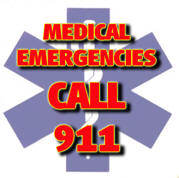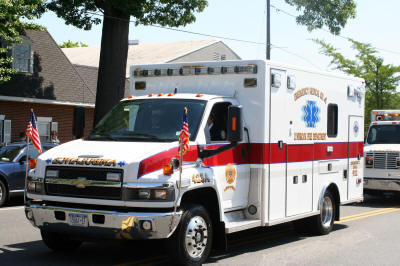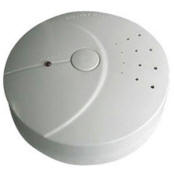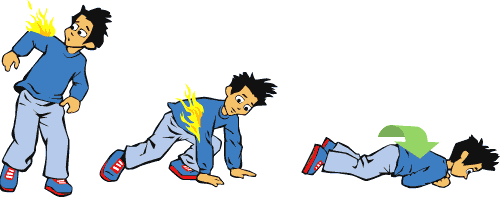
Medical Emergencies & Fire Prevention
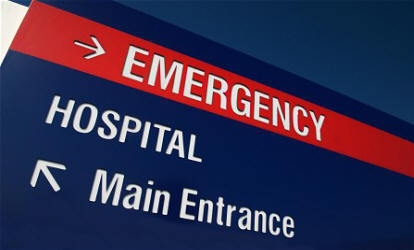 In
Medical Emergencies, Make The Right
Call
In
Medical Emergencies, Make The Right
Call
At some time in your life you or a loved one will have a medical emergency.
Do you know what to do if someone is badly injured or suddenly becomes sick?
You should. Just knowing how to call for help in an emergency can help save a life. Take a few moments to read this information. Share it with your family and friends. Know how to make the right call-
who to call for help
when to call and
what to do until help arrives in medical emergencies.
CALL EMS IN EMERGENCIES ONLY
When you think someone is badly hurt or suddenly sick and in danger, call EMS immediately. EMS stands for emergency medical services. One call connects you with a whole emergency medical team- technicians, paramedics, physicians and nurses who are especially trained to handle these situations.
Call EMS when you think someone's life is threatened, when someone faints or collapses, has persistent chest pain or difficulty breathing, or is badly injured. If you are not sure if it is an emergency, do call EMS.
DON'T CALL EMS FOR NON-EMERGENCIES
Going to a doctor's appointment, getting a scraped knee bandaged or filling a prescription to not require professional EMS assistance. Calling EMS in non-emergencies does tie up the system and make it harder for EMS personnel to do their job responding to serious emergencies. Again, if you are not sure if it's an emergency, do call EMS.
|
KNOW YOUR LOCAL EMERGENCY TELEPHONE NUMBERS
You may know your local Emergency Medical Services a the ambulance service, the rescue squad, the fire department, the paramedics, or 9-1-1. What's important is to know how to contact them. In communities with a 9-1-1 system, simply dialing 9-1-1 in an emergency connects you to EMS, the police and fire department. |
|
WHEN TO CALL AN AMBULANCE
|
When should you call an ambulance instead of driving to the emergency department? Ask yourself the following questions:
|
|
If the answer to any of these questions is yes, or if you are unsure, it's best to call an ambulance. This is even true though you can sometimes get to the hospital faster by driving than by calling an ambulance. Paramedics and emergency medical technicians communicate with the physician in the emergency department by radio. they are trained to begin medical treatment on the way to the hospital. This prevents any delay that should occur if the patient is driven to the emergency department. The ambulance can also alert the emergency department of the patient's condition in advance.
If you live in a community with a single emergency number, call for help is easy. Just dial 9-1-1. If your community does not have the 9-1-1 emergency number, keep the numbers of the fire, police, and emergency medical services near your telephone. When you call for help, speak calmly and clearly. Give your name, the address, phone number, location of the victim (such as upstairs in the bedroom) and the nature of the problem. Don't hang up until the emergency operator tells you to. They may also need additional information or to give you instructions.
Information on when to call an ambulance provided by the American College of Emergency Physicians
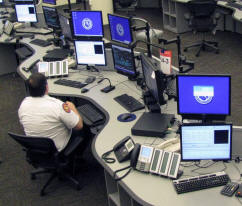 KNOW WHAT TO SAY
KNOW WHAT TO SAY
The information you give the emergency dispatch operator helps EMS help you.
Stay calm, speak clearly, and stay on the phone until the emergency operator tells you to hang up.
Tell the emergency dispatch operator where to find the person needing emergency care, who is hurt or sick, and what happened. The emergency operator will also need to know what condition the victim is in and if any help is being given.
Give the exact location of the emergency. Point out any landmarks- nearby intersections, bridges, buildings- that will help the police and ambulance driver find you. And leave your name, address, and telephone number in case the emergency operator needs to get back in touch with you.
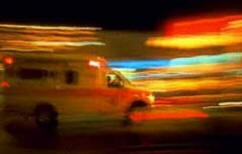 KNOW WHAT TO DO UNTIL HELP ARRIVES
KNOW WHAT TO DO UNTIL HELP ARRIVES
You've called for help. The ambulance is on the way. What do you do while you wait?
If the emergency operator gives you specific instructions, remember them and carry them out. Don't move someone who is injured unless they are in danger. Do try to keep them as warm as possible. If someone else is with you, send them to meet the police and ambulance. Make it easy for the police and ambulance driver to spot you by turning on a porch light or marking your location with a flare or bright cloth if you are outside.
MEET THE EMS TEAM
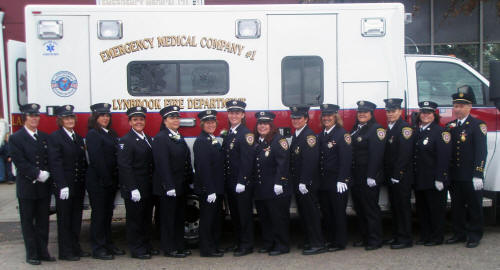 Emergency Dispatch Operators answer emergency
calls, obtain the who what and where information, and send help on the way.
Emergency Dispatch Operators answer emergency
calls, obtain the who what and where information, and send help on the way.
Emergency Medical Technicians or EMT's, have various levels of training. Some EMT's drive the ambulance, assist with rescues, and perform basic emergency care. Other EMT's are emergency dispatch operators who send ambulances and emergency vehicles to the emergency scene.
Paramedics are EMT's with the highest level of training. They perform medical procedures at the scene of the emergency or in the ambulance on the way to the hospital. Using a radio to communicate, paramedics often get instructions from physicians.
Emergency Nurses are specially trained to help and treat emergency patients. They are the first contact at the emergency room, they meet the ambulance, get the patients medical information and arrange for the doctor to see the patient.
Emergency Physicians are doctors who specialize in treating people who are seriously injured or who have become sick and very suddenly, such as heart attack victims.
Fire in the United States
The U.S. has one of the highest fire death rates
in the industrialized world. About 5,000 people die every year in
this country as the result of fire, and another 25,500 are injured.
About 100 firefighters are killed annually in duty-related incidents. Each year, fire kills more Americans than all natural disasters combined. Fire is the third leading cause of accidental death in the home; at least 80 percent of all fire deaths occur in residences.
More than 2 million fires are reported each year. Many others go unreported, causing additional injuries and property loss. Direct property loss due to fires is estimated at $9.4 billion annually.
Fire Prevention and Safety Tips
Are you and your family prepared?
Keep a fire extinguisher in your home and car, and read the directions.
- Dial 911 before attempting to attack the fire yourself, no matter how small the fire seems.
- Remember that lives are much more valuable than property. If you're out of the building, STAY OUT!
- Don't smoke in bed.
- Don't leave your cigarettes or other lit smoking materials unattended.
- Keep ashtrays away from curtains, upholstered furniture, and other combustibles.
- Always look for the Underwriters Laboratory (UL) or Factory Mutual (FM) labels when purchasing appliances, storage containers or electrical accessories.
- Remember that smoke, heat and toxic gases from fires can kill you long before flames get to your part of the structure. KEEP LOW when evacuating.
IS YOUR NUMBER UP?
Do you have a number on the front of your house? Can the number be seen easily from the street during the day and night? This is very important in case the police, the driver of a fire truck or ambulance needs to find your house quickly. House numbers can be purchased at a low cost from a hardware store.
Fire Extinguishers
|
Class "A" Extinguishers |
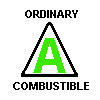 |
|
Class "B" Extinguishers |
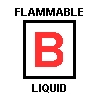 |
|
Class "C" Extinguishers
|
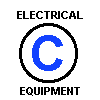 |
|
Class
"D" extinguishers
|
Flammable |
Portable extinguishers are classified according to their capacity for handling specific types of fires.
Fire extinguishers must be readily accessible, properly maintained, regularly inspected.
It is estimated that over 40 percent of residential fires and three-fifths of residential fatalities occur in homes with no smoke alarms. In the early 1970’s, the cost of protecting a three bedroom home with professionally installed alarms was approximately $l000; today the cost of owner-installed alarms in the same house has come down to as little as $10 per alarm, or less than $50 for the entire home.
SMOKE DETECTORS SAVE LIVES
 All seasoned fire fighters have heard
the explanation, "The smoke detector woke me up. I was able to wake the
rest of the family and get them out just ahead of the fire." A smoke
detector is the best early fire detection device available to the
average homeowner. Here are some answers to questions commonly asked
about smoke detectors.
All seasoned fire fighters have heard
the explanation, "The smoke detector woke me up. I was able to wake the
rest of the family and get them out just ahead of the fire." A smoke
detector is the best early fire detection device available to the
average homeowner. Here are some answers to questions commonly asked
about smoke detectors.
How much does a smoke detector cost?
A smoke detector may be purchased at most retail stores for prices ranging from $5 to $20.
What kind of smoke detector should I buy?
Both battery powered and house current powered smoke detectors do a good job. Make sure the one you choose has been tested by a nationally recognized testing laboratory.
How many smoke detectors do I need?
There should be at least one detector on every floor of the house except attics, unless the attic space is used for sleeping. Additional detectors will increase the chance of early detection.
Where should I place a detector?
Smoke detectors should be placed near bedrooms either on the ceiling--at least 6 to 12 inches away from wall--or on the wall, 6--12 inches down from the ceiling. This allows the detector to sense the smoke as it approaches the sleeping area.
How do I install a smoke detector?
Battery operated detectors can be attached directly to the ceiling or wall. Wired-in electric detectors are somewhat more difficult to install and may require an electrician.
What maintenance do smoke detectors require?
Test the detector at least monthly by pushing the test button. Once a year vacuum the dust from alarm air vents. Battery operated detectors should have the battery replaced each year or when the low battery warning sounds. Select a memorable date such as a holiday or a family birthday to remind you to replace the batteries in your smoke detectors at that time.
Is there anything else I should do with my smoke detector?
YES! Hold practice drills with the whole family so they will know what to do if your detector ever alerts you of an emergency.
Any other tips?
Install a smoke detector on each level of your home.
Never remove a good battery or otherwise disable the detectors.
Know what to do after a detector sounds off.
Plan a home escape route in the event of a fire.
The Consumer Products Safety Commission (CPSC) reports that approximately 200 people per year are killed by accidental CO poisoning with an additional 5000 people injured.
Frequently Asked Questions About Carbon Monoxide Detectors
What is carbon monoxide (CO) and why do I need a carbon monoxide detector?
Carbon monoxide is a colorless, odorless, tasteless and toxic gas produced as a by-product of combustion. Any fuel burning appliance, vehicle, tool or other device has the potential to produce dangerous levels of carbon monoxide gas. Examples of carbon monoxide producing devices commonly in use around the home include:
Fuel fired furnaces (non-electric)
Gas water heaters
Fireplaces and woodstoves
Gas stoves
Gas dryers
Charcoal grills
Lawnmowers, snowblowers and other yard equipment
Automobiles
The Consumer Products Safety Commission (CPSC) reports that approximately 200 people per year are killed by accidental CO poisoning with an additional 5000 people injured. These deaths and injuries are typically caused by improperly used or malfunctioning equipment aggravated by improvements in building construction which limit the amount of fresh air flowing in to homes and other structures.
While regular maintenance and inspection of gas burning equipment in the home can minimize the potential for exposure to CO gas, the possibility for some type of sudden failure resulting in a potentially life threatening build up of gas always exists.
What are the medical effects of carbon monoxide and how do I recognize them?
Carbon monoxide inhibits the blood's ability to carry oxygen to body tissues including vital organs such as the heart and brain. When CO is inhaled, it combines with the oxygen carrying hemoglobin of the blood to form carboxyhemoglobin. Once combined with the hemoglobin, that hemoglobin is no longer available for transporting oxygen. How quickly the carboxyhemoglobin builds up is a factor of the concentration of the gas being inhaled (measured in parts per million or PPM) and the duration of the exposure. Compounding the effects of the exposure is the long half-life of carboxyhemoglobin in the blood. Half-life is a measure of how quickly levels return to normal. The half-life of carboxyhemoglobin is approximately 5 hours. This means that for a given exposure level, it will take about 5 hours for the level of carboxyhemoglobin in the blood to drop to half its current level after the exposure is terminated.
The following table describes the symptoms associated with a given concentration of COHb:
|
% COHb |
Symptoms and Medical Consequences |
|
10% |
No symptoms. Heavy smokers can have as much as 9% COHb. |
|
15% |
Mild headache. |
|
25% |
Nausea and
serious headache. Fairly quick recovery after |
|
30% |
Symptoms
intensify. Potential for long term effects |
|
45% |
Unconsciousness. |
|
50%+ |
Death. |
IF YOUR CARBON DIOXIDE DETECTOR ACTIVATES, CALL 911 IMMEDIATELY
In North America, children die or are seriously hurt in fires twice as often as adults. Teach your children the importance of fire safety at an early age.
Matches and Lighters
Don't let your children play with fire. Children are fascinated by fire. They don't understand the danger of playing with matches and lighters. Always keep matches and lighters away from children. Store them up high, preferably in a locked cabinet. Keep matches and lighters out of the reach of children.
Tell your children if they find matches or lighters:
not to touch them, and
to call an adult/grown-up right away.
Teach your children that:
matches and lighters are not toys and are dangerous;
fire can hurt them and destroy things;
once a fire is started it is difficult to control;
matches and lighters should only be used by adults.
Practice the Stop, Drop and Roll movements with your children. This could save their lives if their clothes ever caught on fire. Have your children pretend that their clothes are on fire. Then tell them to:
Stop - Get them to stop where they are, and stop what they are doing. Don't run!
Drop - Get them to drop to the floor as quickly as possible.
Roll - Have them cover their face with their hands, then roll over and over until the flames are out.
Plan to Get Out Alive
When children see smoke or fire they often respond by trying to hide, for example in a closet, or under a bed. Tell your children that they cannot hide from fire but they can escape if they follow a few simple rules.
Prepare a home fire escape plan with your children.
Practice fire drills at least twice a year with your children.
Show your children different ways to get out of every room.
Make sure your children know how to get out of their home. Show them how to unlock doors and windows.
In an apartment, your children need to know which stairways will get them out of the building.
Tell your children never to take the elevator during a fire.
Decide on a planned meeting area outside the home as part of your home fire escape plan.
Never go back into a burning building!
Get out, stay out and stay alive!
Teach your children the Fire Department phone number, 9-1-1.
Call the Fire Department from a neighbor's phone.
Crawl Low Under Smoke
Teach your children:
smoke is dangerous;
smoke rises, so cleaner, cooler air is near the floor;
to get down on their hands and knees and crawl low under the smoke to the nearest exit.
Smoke Alarms
Make sure children know what a smoke alarm is. Children must know:
smoke alarms warn them if a fire starts;
to get out of the house immediately when they hear the sound of the smoke alarm;
smoke alarms are not toys and should not be played with. Show your child how important smoke alarms are by testing your smoke alarm every month and changing the battery at least once a year.
Visit the United State Fire Administration Kids Place Homepage
Visit Allstate Insurance's Survive Alive Village page
Contact the Lynbrook Fire Department, Fire Prevention Office at 516-599-1410
Lynbrook Fire Department Speakers Bureau
The Lynbrook Fire Department has a speakers bureau that is available on request by any organization, school or association in the village. This bureau can provide a speaker covering such topics but not limited to: Fire Prevention and Safety, EMS Education and Baby Sitting Safety. You can request a guest speaker for your organization by calling 599-1410.
Fire Inspection of Commercial & Residential Properties-
The Lynbrook Fire Department is charged with the responsibility of inspecting commercial establishments in the village for fire safety code violations. The Lynbrook F.D. will also inspect residential homes at the owners request. There are no fees for inspections. You may contact our fire inspectors office by filling out the form below or calling 599-1410, be sure to leave a message if the office is unoccupied and someone will return your call shortly.
Contact The Fire Prevention Office
To request an inspection, report a potential fire hazard, make a comment regarding fire inspections, or request a guest speaker, call 516-599-1410.
Source of the Facts and statistics on this page is the USFA
